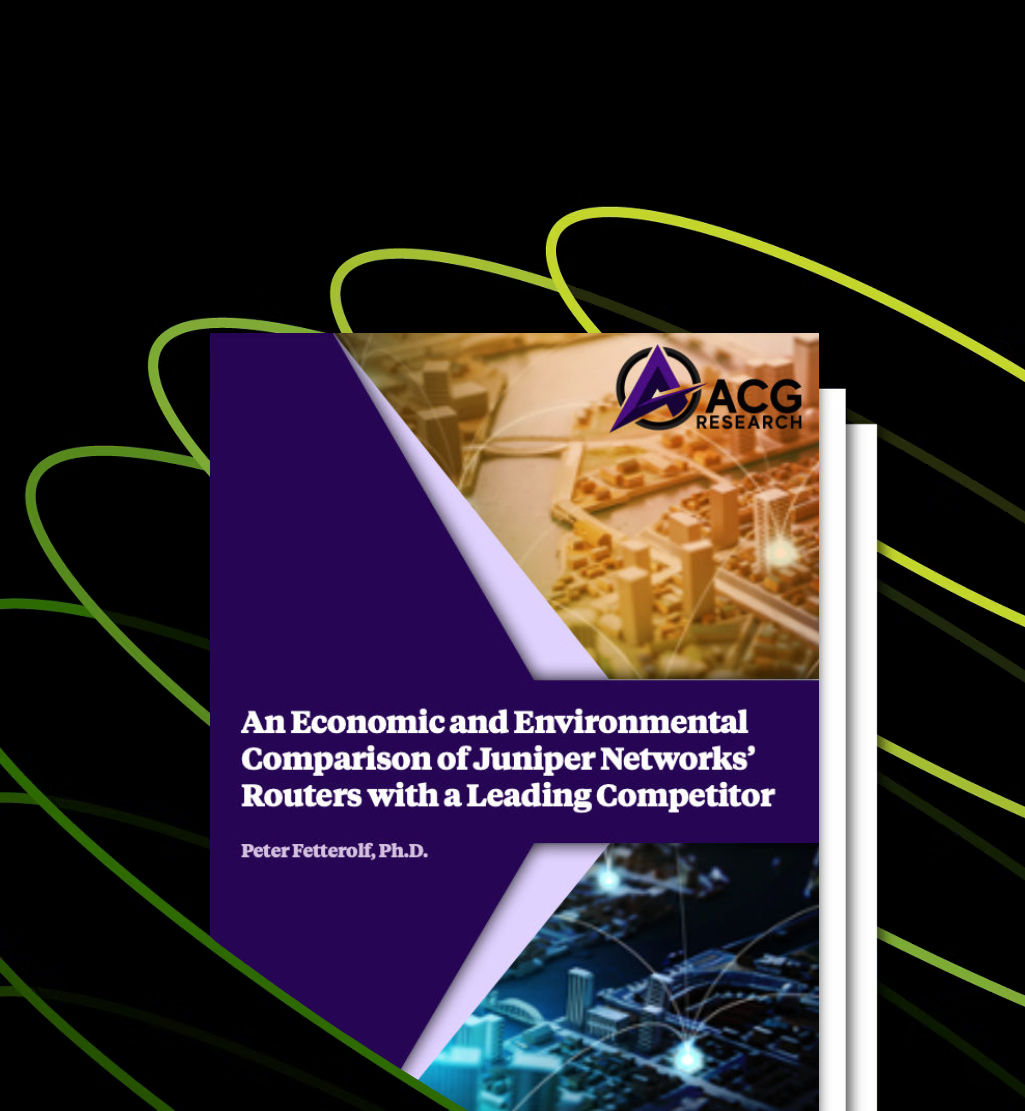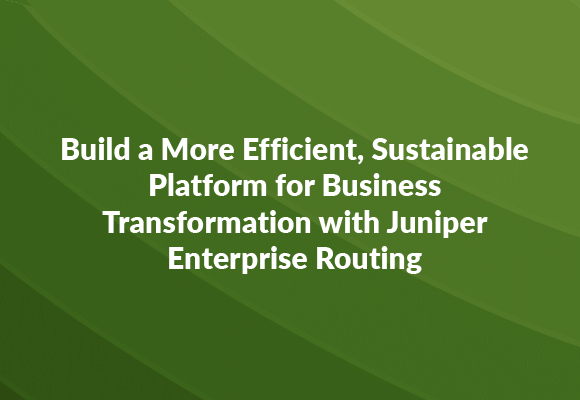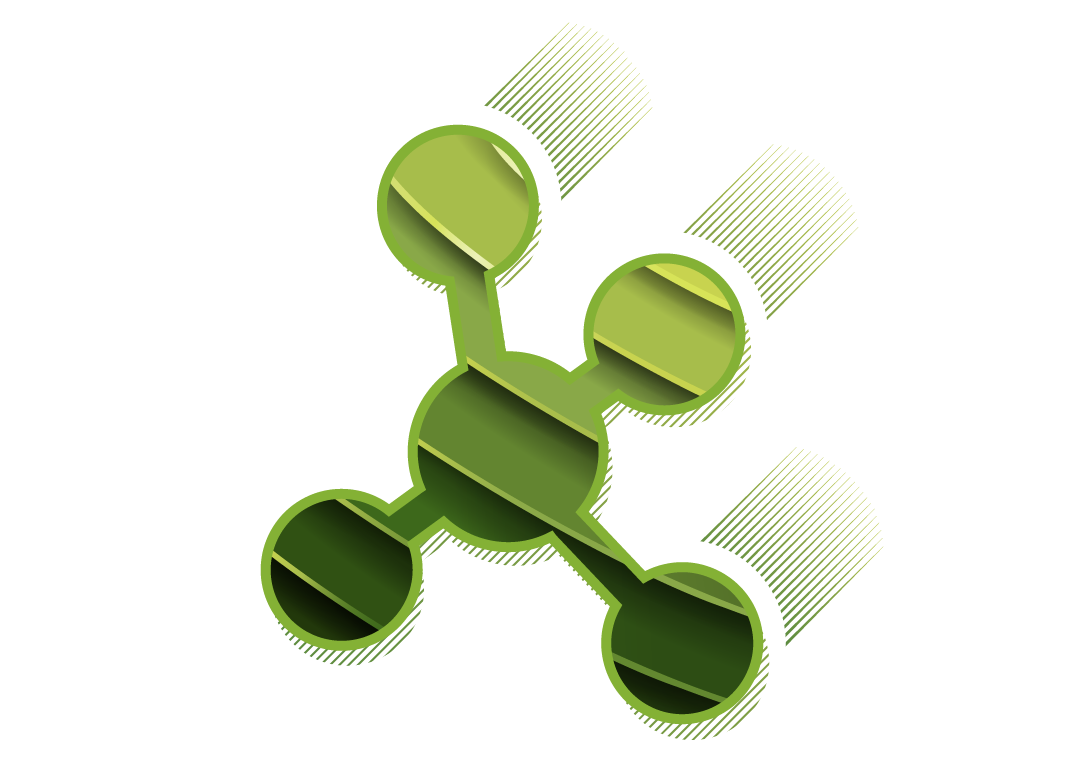
Report: Juniper routers improve OpEx by 61% with a lower carbon footprint
Your legacy network is quickly running out of gas. If you’re not sure where to turn for your network refresh, ACG research did the legwork for you and shares their valuable insights in this TCO report. Spoiler alert: According to their data, large enterprises that choose Juniper routers typically gain an 83% CapEx improvement and a staggering 61% OpEx improvement while also significantly lowering their carbon footprint.
Read the report to learn how Juniper offers a simple solution for increasingly complex digital transformations.
Break free from outdated WAN architectures
Feeling trapped in the relentless cycle of hardware upgrades, hefty costs, and downtime due to frequent end-of-life announcements? If so, you're not alone. Discover a more innovative, sustainable, and cost-effective WAN.
Deliver unparalleled versatility with a minimal carbon footprint
Ease of automation
Superior experiences with simplified automation
Guarantee application quality of service and end user experience with intent-based automation. Juniper automation gives you full network transparency so you can focus on optimizing business-critical applications.
____
Spend 50% less time on incident resolution.
Proven performance
Proven, reliable, secured, high performance at scale
Leverage best-of-breed routing portfolio to achieve quantifiable CapEx/OpEx optimization. A specialized silicon strategy lets you position appropriate routing solutions for each WAN use case.
____
Proven WAN architecture already deployed with 1300+ digital transformation leaders.
Sustainability
Future-proof network architecture, ESG-friendly
Meet ESG mandates/goals by deploying devices optimized for minimal power consumption and space; by maximizing capacity usage; and by partnering with a sustainable vendor.
____
Up to 77% lower power consumption and 64% more space efficiency than competition.
Compare Juniper and Cisco routing solutions

Longevity and a Roadmap to 800GE
12+-year platform longevity with easy scale up/in options and next-gen platforms built for similar longevity and scale.
Express 5 generation PTX line card with true 36 x 800G ports. All Juniper platforms are 800GE ready.
Platform lacks continuity and is fraught with disruptive, forced forklift upgrades and frequent EOLs. Orthogonal chassis are not available.
Limited 800GE capacity in comparison to the PTX series. Cannot support more than 24 ports of 800GE on 36 port line card.
Silicon Strategy
TRIO: Flexible logical scale and a true “sea of generic processors” design
Express: Core throughput
Merchant: Blended performance
LightSpeed Plus: Stuck at its current generation with no further innovation planned. Lacks uniformity across ASIC families.
Betting everything on Silicon One, despite third party testing revealing performance issues in several use cases that benefit from more specialized silicon architectures.
Zero Trust Security
Offers encryption without performance penalties—any capacity, any workload. Automatically safeguards against DDoS attacks with enabled routers for 100GB to 40TB at the edge.
EOL routers make networks 66% more prone to attacks.
Does not support inline MACsec encryption or EVPN. Has a history of security vulnerabilities.
Proven Performance
Best-of-breed WAN, campus, and AI DC optimize CapEx and OpEx. Our silicon strategy supports proven network solutions preferred by 1,300+ digital transformation leaders in all use cases.
EOL routers can’t scale in capacity and features for next-gen distributed architectures or application workloads
No support for new features or protocols.
Does not support MACsec or IPsec at line-rate.
Low VOQs (56k) for Edge requirements
Limited FIB Scale
Difficult to implement HQOS, BNG, etc.
Unreliable IPv4 and IPv6 forwarding performance
Sustainable by Design
ACX: Up to 77% lower power consumption than competitors and 64% more space-efficient than Cisco platforms
MX10K: Up to 15% more power-efficient than competitors
PTX10K Platforms: 59% greater power efficiency than previous generation line cards
High power consumption for heavy OpEx overhead.
Higher maintenance costs and carbon emissions associated with EOL/EOS platforms, added e-waste with a higher price tag.
No investment in new hardware for ASR9000 platforms.
Silicon processes power and capacity less efficiently than Juniper Trio and Express.
Ease of Automation
Intent-based automation allows end-to-end connectivity to be easily provisioned. Juniper’s award-winning Day 2 AIOps enable continual AI-assisted optimization.
Multiple old-gen automation products require heavy add-on professional services to fulfill Day 0 to Day 2 operations.
Cisco lags in its ability to deliver full-fledged automation use cases out of the box, leading to a longer TTM.
Network resiliency and closed-loop remediation offered through CrossWorks—a relatively new solution. Most deployments leverage individual components.
Discover why now is the time to migrate your WAN

Pushing the boundaries of sustainability in networking

Why Juniper wins your network migration

Now is the time to modernize your WAN

Enterprise AI-Native routing
Ready to see what Juniper can do for you?
These claims are based on the example of a comparison of Juniper MX304 v. Cisco ASR9902 running in a full configuration. Users should conduct their own research and seek professional advice from Juniper or Partner experts to establish the specific benefits for their application.
























